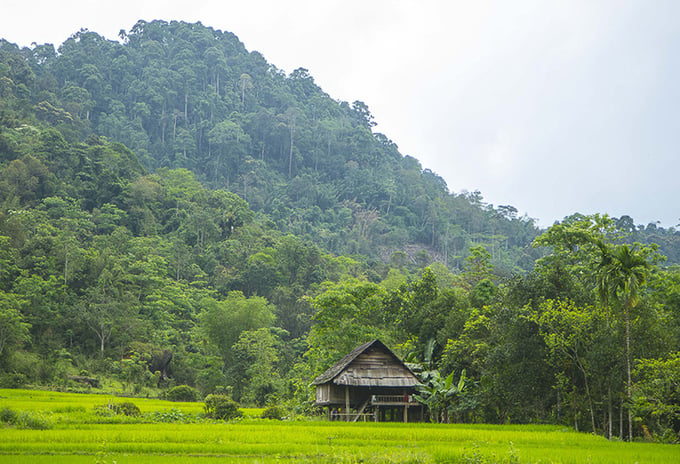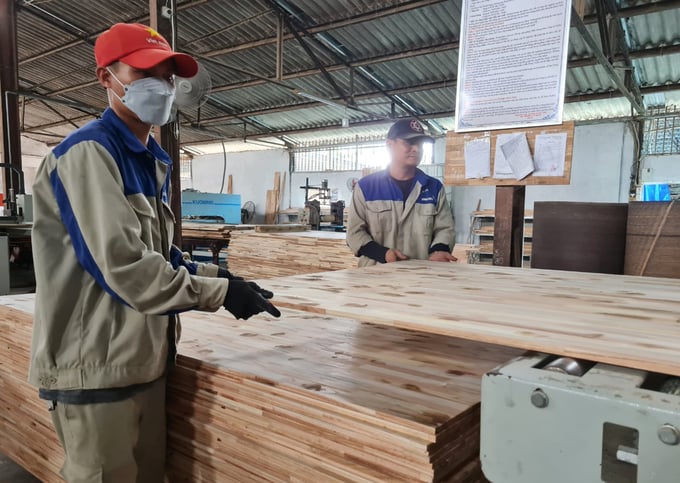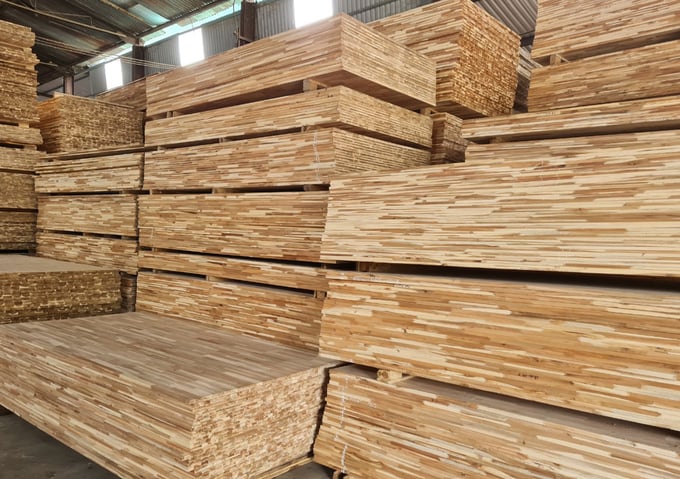June 20, 2025 | 13:56 GMT +7
June 20, 2025 | 13:56 GMT +7
Hotline: 0913.378.918
June 20, 2025 | 13:56 GMT +7
Hotline: 0913.378.918

Nghe An must develop and implement a roadmap effectively to revive the potentials and advantages of the forest fund.
The total area of of forest and forestry land in Nghe An province is currently esetimated at 1.16 million hectares. 55% of the total area, including mainly protection and special use forests, is assigned to organizations; 45% of the area, including mainly production forests, is assigned to individual households, village communities, and Communal People's Committees. Over the last few years, the management, protection, development and use of forests and forestry economic development have achieved great results; the policy of socializing forestry has been put into practice, contributing to creating employment opportunities, increasing income, improving people's livelihood, promoting socio-economic development, responding to climate change as well as ensuring national defense and security.
Nghe An province has handled the task of forest fund management, protection and development effectively. The province grows more than 18,000 hectares of concentrated forests annually, the wood processing industry and non-timber forest products are progressing positively by attracting potential investors, thereby maintaining a stable growth in the export turnover of timber and non-timber forest products.
On the other hand, the development of forest plantation material areas in association with processing plants has received more attention from the agricultural sector. Mechanisms and policies on the development of material forests have been gradually improved. Nghe An is also implementing a plan for sustainable forest management in association with sustainable forest management certification to increase the added value of forest products, with the aim of meeting the needs of the processing industry as well as the export markets.
“The production value of Nghe An's forestry industry (at constant prices in 2010) has increased significantly over the years: It reached VND 3,708,704 million in 2019; 3,935,587 million VND in 2020; and 4,293,333 million VND in 2021 (an increase of 1.16 times compared to 2019). The industry's growth rate in 2019 reached 5.39%,5.08% in 2020; 7.85% in 2021, an increase of 1.46 times compared to 2019”.

The production and processing of forest products has seen many changes in recent years.
In order to accomplish the goals and orientations for sustainable forestry development towards 2030 with a vision to 2045, the Nghe An Provincial People's Committee has assigned the Department of Agriculture and Rural Development to act as the focal point to advise, and assign specific responsibilities to provincial-level departments, committees, branches, district-level People's Committees and related units; who will subsequently coordinate to perform the following key tasks and solutions: Dissemination and raise awareness of authorities, branches and people regarding the responsibility of forest management and protection; organize the review and adjustment of planning areas for special-use forests, protection forests and production forests in line with the province's socio-economic development objectives and orientations; finalize the work of land allocation, forest allocation, issuance of forest land use right certificates, ensuring land areas for forestry planning (including land with forest and land without forest); review, formulate and promulgate policies suitable to the current situation; encourage people to participate in forest protection and development activities; organize the completion and effective implementation of approved forestry development programs, plans, schemes and projects, etc.
Namely, the province will focus on synchronously deploying solutions to attract investment and build a high-tech forestry park in the North Central region in Nghe An province as established by the Prime Minister under Decision No. 509/QD-TTg dated March 31, 2021; Promote investment attraction for businesses applying advanced technologies through preferential policies on land use levy and land use tax.

Nghe An must raise the standards for products, thereby conquering difficult markets around the world and elevating the forestry industry.
Nghe An has determined that forest economic development must follow along the value chain including seed production, sustainable forest management, high-quality large timber afforestation, exploitation, processing and consumption of products in order to increase the value of forest products. The province aims to make the wood and non-timber forest products processing industry a driving force in the production and export activities of the entire North Central region.
Based on realistic conditions, Nghe An must develop appropriate supporting mechanisms and policies as leverage, thereby reinforcing the development goal of large timber afforestation and native trees afforestation. In addition, the province needs to support in developing dossiers for certificates of sustainable forest management; review, supplement and remove unnecessary administrative procedures; establish preferential mechanisms for tax, land, science and technology, as well as credit policies to encourage forest owners and businesses to expand investment and cooperation in afforestation, processing and trade of forest products along the value chain.
With its current potential, advantages as well as the shortcomings and limitations, the general policy of Nghe An province is to encourage businesses to deploy in the direction of diversifying products and adapt to the tastes of domestic consumers. Moreover, prioritize the development of strategic product lines, ensuring stability and high added value to explore and expand market shares in the EU in accordance with the VPA/FLEGT Agreement.
Translated by Nguyen Hai Long
![Turning wind and rain into action: [9] Digitizing hydrometeorological data in response to climate change](https://t.ex-cdn.com/nongnghiepmoitruong.vn/608w/files/news/2025/06/17/z6704423696987_15fd32ffc26d590d204d520c9dac6786-nongnghiep-165943.jpg)
(VAN) Farmers have begun accessing hydrometeorological applications to adjust their cropping schedules, aiming to ensure productivity and adapt to climate change.
![Turning wind and rain into action: [8] Real-time salinity detection and early warning technology](https://t.ex-cdn.com/nongnghiepmoitruong.vn/608w/files/news/2025/06/17/z6704423696987_15fd32ffc26d590d204d520c9dac6786-nongnghiep-151127.jpg)
(VAN) Thanks to the integration of modern hydrological-hydraulic models, remote sensing technologies, and artificial intelligence, the accuracy of hydrological forecasting has significantly improved.
![Turning wind and rain into action: [7] Early disaster warnings help marine farmers minimize losses](https://t.ex-cdn.com/nongnghiepmoitruong.vn/608w/files/news/2025/06/17/z6704423696987_15fd32ffc26d590d204d520c9dac6786-nongnghiep-142942.jpg)
(VAN) In recent years, thanks to early disaster warnings and forecasting, marine farmers in Khanh Hoa province have been able to reduce risks and losses, thereby improving production efficiency.
![Turning wind and rain into action: [6] ‘Four on-the-spot’ disaster management software](https://t.ex-cdn.com/nongnghiepmoitruong.vn/608w/files/news/2025/06/17/e5a48259d6a262fc3bb3-nongnghiep-183800.jpg)
(VAN) By simply activating the scenario on the disaster management software, the relevant authorities immediately know how many households need to be evacuated, where to evacuate them to, and by what means of transportation…
![Turning wind and rain into action: [5] Hue applies modern technology in disaster forecasting](https://t.ex-cdn.com/nongnghiepmoitruong.vn/608w/files/news/2025/06/17/z6704423696987_15fd32ffc26d590d204d520c9dac6786-nongnghiep-093938.jpg)
(VAN) In Hue city, modern technology has recently been applied in meteorological and hydrological forecasting and warning, helping to reduce the damage caused by natural disasters.

(VAN) A cutting-edge farming technique being implemented on an experimental ranch in Arizona's Sonoran Desert has already saved a billion gallons of water over five years, according to Civil Eats.

(VAN) Poultry and pig production and the environment can be boosted through enhanced water technology, according to new research.